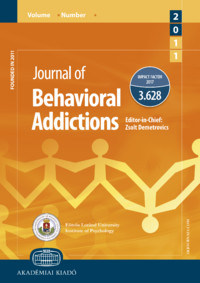White matter microstructural and Compulsive Sexual Behaviors Disorder – Diffusion Tensor Imaging study
White matter microstructural and Compulsive Sexual Behaviors Disorder – Diffusion Tensor Imaging study
Author(s): Małgorzata Draps, Natalia Kowalczyk-Grębska, Artur Marchewka, Feng Shi, Mateusz GolaSubject(s): Behaviorism
Published by: Akadémiai Kiadó
Keywords: Diffusion Tensor Imaging; white matter microstructure; Compulsive Sexual Behaviors Disorder; hypersexuality; addictions; Obssesive-Compulsive Disorder
Summary/Abstract: Background and aims. Even though the Compulsive Sexual Behavior Disorder (CSBD) was added to the ICD-11 under the impulse control category in 2019, its neural mechanisms are still debated. Researchers have noted its similarity both to addiction and to Obssesive-Compulsive Disorder (OCD). The aim of our study was to address this question by investigating the pattern of anatomical brain abnormalities among CSBD patients. Methods. Reviewing 39 publications on Diffusion Tensor Imaging (DTI) we have identified main abnormalities specific for addictions and OCD. Than we have collected DTI data from 36 heterosexual males diagnosed with CSBD and 31 matched healthy controls. These results were then compared to the addiction and OCD patterns. Results. Compared to controls, CSBD individuals showed significant fractional anisotropy (FA) reduction in the superior corona radiata tract, the internal capsule tract, cerebellar tracts and occipital gyrus white matter. Interestingly, all these regions were also identified in previous studies as shared DTI correlates in both OCD and addiction. Discussion and conclusions. Results of our study suggest that CSBD shares similar pattern of abnormalities with both OCD and addiction. As one of the first DTI study comparing structural brain differences between CSBD, addictions and OCD, although it reveals new aspects of CSBD, it is insufficient to determine whether CSBD resembles more an addiction or OCD. Further research, especially comparing directly individuals with all three disorders may provide more conclusive results.
Journal: Journal of Behavioral Addictions
- Issue Year: 10/2021
- Issue No: 1
- Page Range: 55-64
- Page Count: 10
- Language: English

